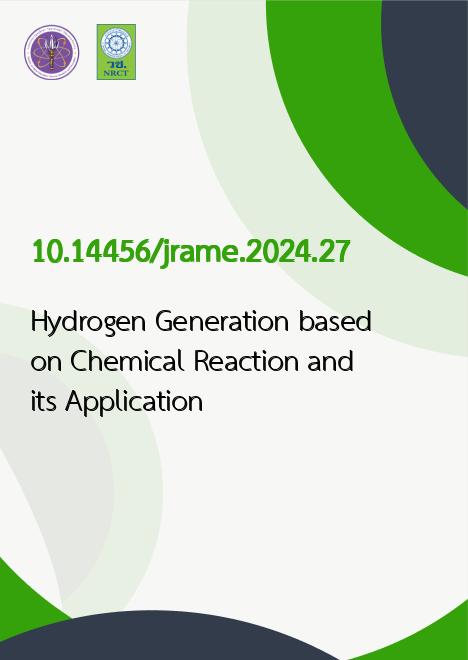
|
Hydrogen Generation based on Chemical Reaction and its Application |
|---|---|
| รหัสดีโอไอ | |
| Creator | 1. Y. Takeuchi 2. N. Zhu 3. K. Amano 4. K. Fukuda |
| Title | Hydrogen Generation based on Chemical Reaction and its Application |
| Publisher | Thai Society of Mechanical Engineers (TSME) |
| Publication Year | 2567 |
| Journal Title | Journal of Research and Applications in Mechanical Engineering (JRAME) |
| Journal Vol. | 12 |
| Journal No. | 2 |
| Page no. | JRAME-24-12-027 (p.1-14) |
| Keyword | Hydrogen generation, Chemical reaction, Sodium borohydride, Citric acid |
| URL Website | https://ph01.tci-thaijo.org/index.php/jrame/index |
| Website title | Journal of Research and Applications in Mechanical Engineering (JRAME) |
| ISSN | 2229-2152 |
| Abstract | In recent years, the effects of global warming due to CO2 emissions have become serious. Since internal combustion engines (ICEs) where gasoline or diesel are used as fuel release huge amount of CO2, attentions have been paid to the new decarbonization countermeasures of Ices. Among them, H2 is regarded as a kind of eco-friendly fuel not only for fuel cell but also for Ices. So far, we have modified a gasoline electric power generator for using H2 as fuel by amounting a surge tank with a special intaking flow system. Though many useful results have been obtained, problems such as H2 supply method for on-site operation or backfire phenomenon at high load still remain. Therefore, in current paper, in order to deal with the above-mentioned problems. Firstly, H2 generation method based on chemical reaction for onsite operation is suggested and verified. Secondly, a new intake flow system for stable operation was designed and manufactured based on simulation and engine performance test was experimentally investigated. Finally, engine operation test using H2 generated by chemical reaction on-site was conducted. As a result, the maximum H2 generation was 29.3 L/min, and the error from the theoretical value was 2.4 %. In engine performance test for new Intaking flow system, the maxi mum output was 900 W, and the thermal efficiency was 19.0%. In engine operation testing generated H2 on-site, the engine speed decreased by up to 900 rpm compared to compressed H2. |
